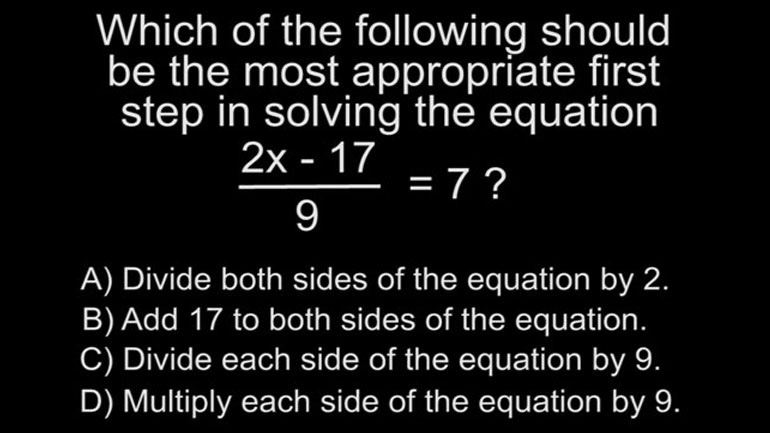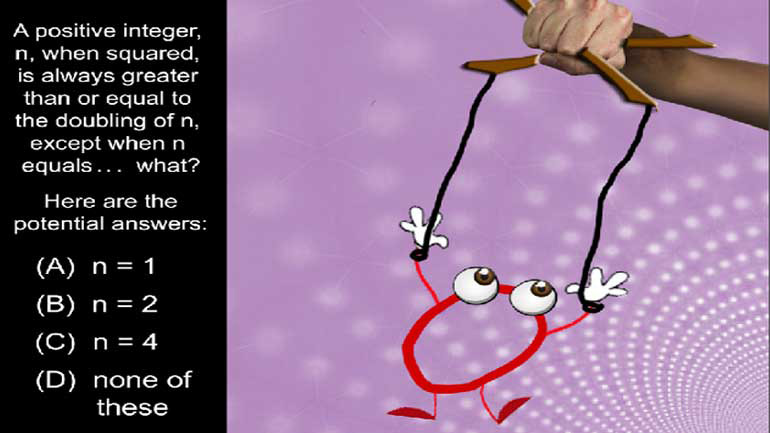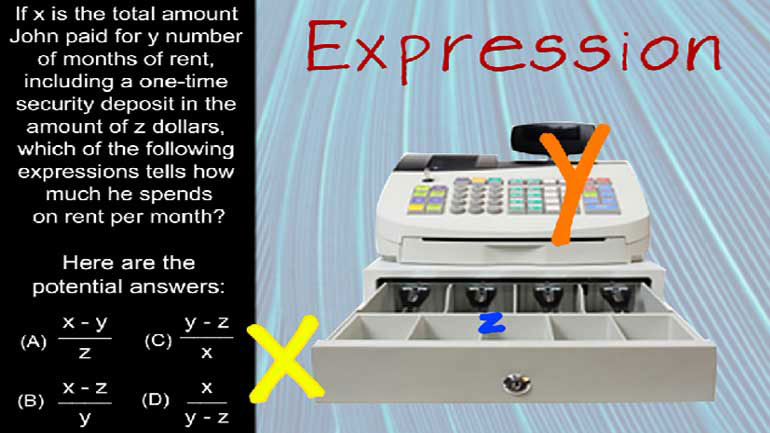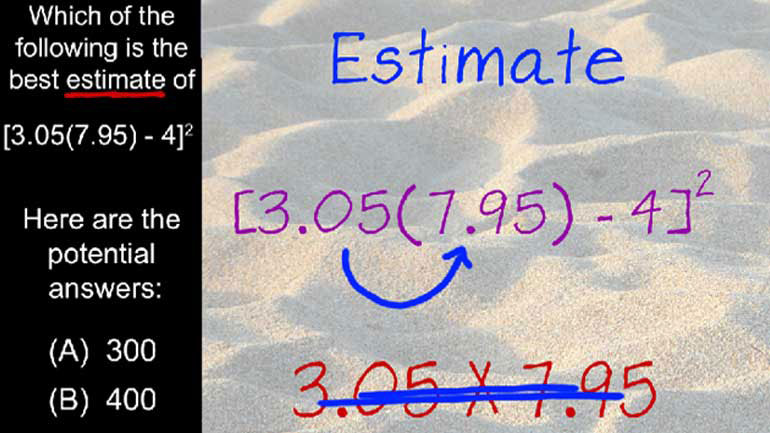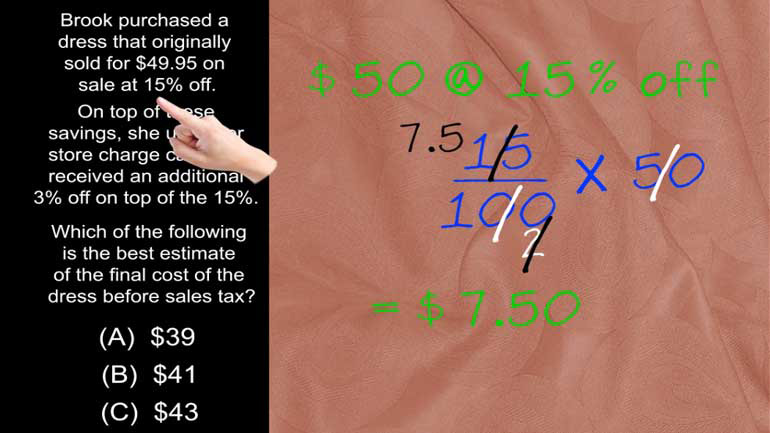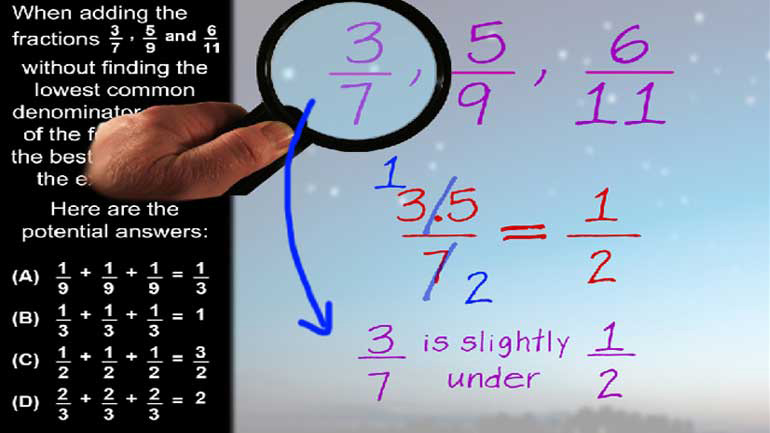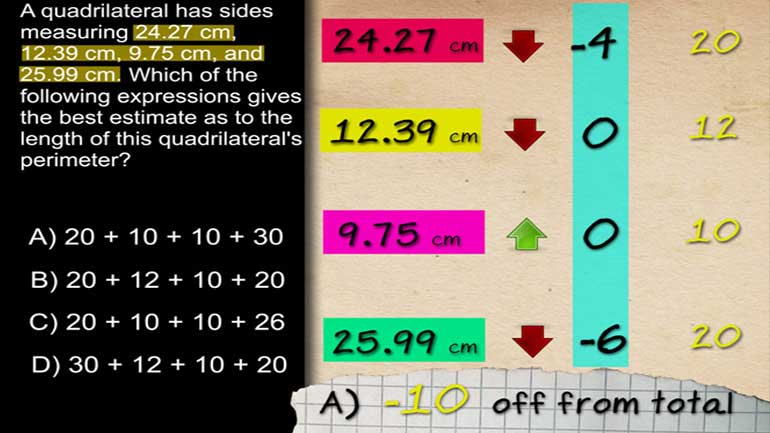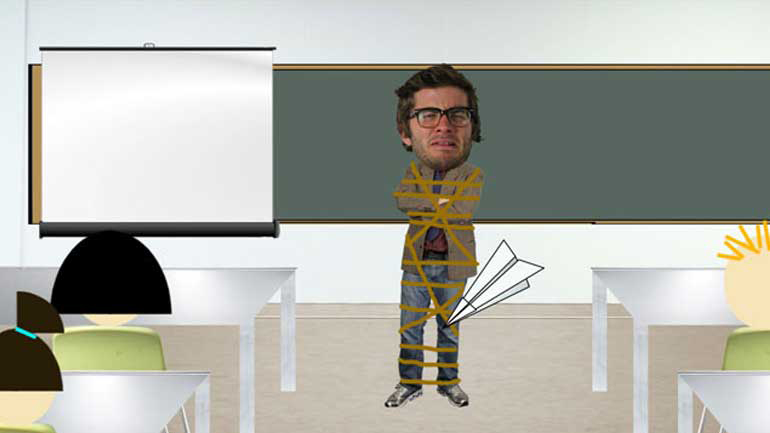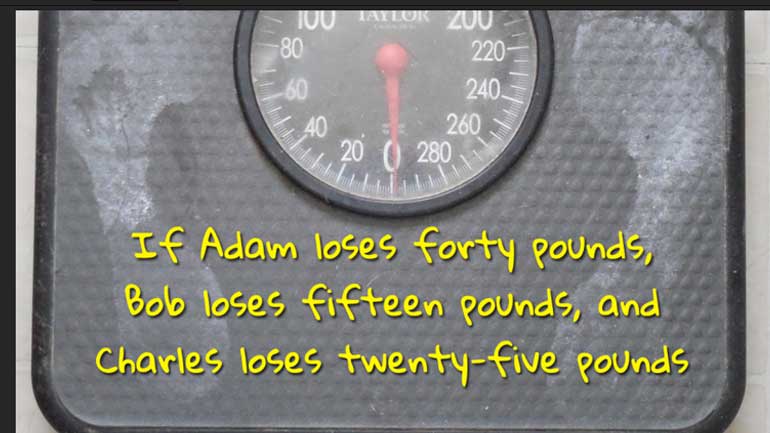ShmoopTube
Where Monty Python meets your 10th grade teacher.
Search Thousands of Shmoop Videos
Mathematical Reasoning Videos 30 videos
CAHSEE Mathematical Reasoning: Drill 1, Problem 1. Based on this information, which of the following can be determined?
CAHSEE Math Mathematical Reasoning: Drill Set 1, Problem 2. Which of the following should be the most appropriate first step in solving the equation?
CAHSEE Math Mathematical Reasoning: Drill 1 Problem 3. Which of the following is the correct order of steps?
CAHSEE Math 6.3 Mathematical Reasoning 171 Views
Share It!
Description:
CAHSEE Math Mathematical Reasoning Drill 6, Problem 3. If, instead, 30 total milligrams were required, which of the following equations shows the correct changes to the above original question?
Transcript
- 00:03
Here’s an unshmoopy question you’ll find on an exam somewhere in life…
- 00:07
A solution containing 30% alcohol is mixed with a solution of pure alcohol to obtain
- 00:12
20 milligrams of a solution that is 70% alcohol.
- 00:17
To determine the amount of pure alcohol that was added to the solution,
- 00:20
the equation 0.3 times 20 minus x… plus x… equals 0.7 times 20… could be used.
Full Transcript
- 00:29
If, instead, 30 total milligrams were required,
- 00:32
which of the following equations shows the correct changes to the above original question?
- 00:37
And here are the potential answers…
- 00:41
That’s a huge cartload of information.
- 00:43
Let’s use the given equation to try to make sense of all of it.
- 00:47
0.3 times 20 minus x… plus x… equals 0.7 times 20.
- 00:53
0.3 is multiplied by 20 minus x.
- 00:56
0.3 refers to the solution that’s 30% alcohol.
- 01:00
But what does 20 minus x mean?
- 01:02
Well, 20 must be the resulting amount of solution, and x is the amount of pure alcohol that is added.
- 01:09
The solution is made up of an unknown amount of 30% alcohol and x amount of 100% alcohol.
- 01:17
20 minus x refers to the amount of 30% alcohol that’s used in the solution…
- 01:21
…because x plus the amount of 30 percent alcohol used should add up to 20 milligrams.
- 01:27
x plus 20 minus x equals 20. The result, 0.7 times 20, is the ending percentage
- 01:34
of alcohol multiplied the amount of solution or 20 milligrams.
- 01:41
So, now that we know what the equation means…
- 01:44
…what will happen to the equation if we suddenly decided that we want
- 01:47
30 milligrams of a 70% solution? Well, the end result will be 30 milligrams
- 01:52
of 70% solution instead of 20 milligrams of that 70% solution.
- 01:56
The new sum is 0.7 times 30, which means we can eliminate option B, which does not change
- 02:03
the ending total. If we want to end with 30 milligrams of solution,
- 02:07
then we also have to put in 30 milligrams of pure and 30% alcohol.
- 02:13
If x still represents the amount of pure alcohol we put in,
- 02:16
then x plus a mystery amount of 30% alcohol equals 30.
- 02:21
x plus 30 minus x equals 30.
- 02:23
0.3 times 20 minus x is replaced with 0.3 times 30 minus x.
- 02:29
That eliminates options A and D from the list, and since we already eliminated B…
- 02:34
…our answer is C.
- 02:35
As in, “Confusing.”
Related Videos
CAHSEE Math: Algebra and Functions Drill 5, Problem 3. Solve the equation.
If you already know what a conditional statement is, then you're smarter than you look. And boy do you look smart.
Indirect proofs (or proofs by contradiction) prove their conclusion by showing that the opposite cannot be true. You can use this in math and in ar...
Formal proofs present the oh-so-mathematical evidence in two columns: one for the statement they are claiming is true, and the other for the reason...

